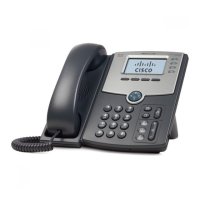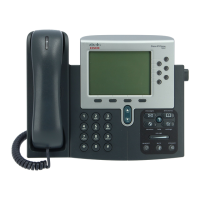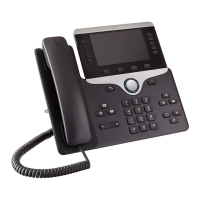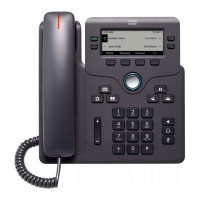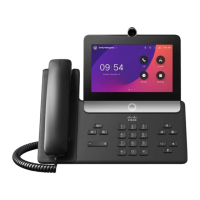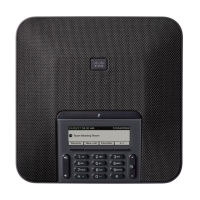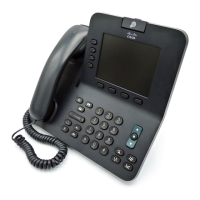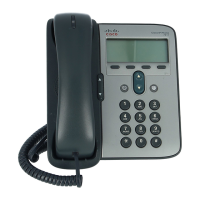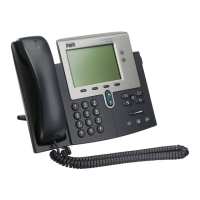1-8
Cisco SIP IP Phone Administrator Guide
Chapter 1 Product Overview
What Is the Cisco SIP IP Phone?
• Speed dial to voice-mail via the messages button
• Do not disturb—Allows the user to instruct the system to intercept incoming calls during specified
periods of time when the user does not want to be disturbed.
• Multiple directory numbers—Allows the Cisco SIP IP phone to have up to six directory numbers or
lines.
• Call waiting (enabled)—Plays an audible tone to indicate that an incoming call is waiting. The user
can then put the existing call on hold and accept the other call. The user can alternate between the
two calls.
• Call waiting (disabled)—Allows the user to instruct the system to block call waiting calls during a
specified period of time.
• Direct number dialing—Allows users to initiate or receive a call using a standard E.164 number
format in a local, national, or international format.
• Direct URL dialing—Provides the ability to place a call using an e-mail address instead of a phone
number.
• Caller ID blocking—Allows the user to instruct the system to block phone number or e-mail address
from phones that have caller identification capabilities.
• Anonymous call blocking—Allows the user to instruct the system to block any calls for which the
identification is blocked.
• Three-way conferencing—Supports one phone conferencing with two other phones by providing
mixing on the initiating phone. To set up a three-way conference call, see the “Making Conference
Calls” section in Chapter 3 of the Cisco IP Phone Models 7960 and 7940 User Guide.
Call Options
• Call forward (network)—Allows the Cisco SIP IP phone user to request forwarding service from the
network (via a third-party tool that enables this feature to be configured). When a call is placed to
the user’s phone, it is redirected to the appropriate forward destination by the SIP proxy server.
• Call hold—Allows the Cisco SIP IP phone user (user A) to place a call (from user B) on hold. When
user A places user B on hold, the two-way RTP voice path between user A and user B is temporarily
disconnected, but the call session is still connected. When user A takes user B off hold, the two-way
RTP voice path is reestablished.
• Call transfer—Allows the Cisco SIP IP phone user (user A) to transfer a call from one user (user B)
to another user (user C). User A places user B on hold and calls user C. If user C accepts the transfer,
a session is established between user B and user C and the session between user A and user B is
terminated.
• Three-way calling—Allows a “bridged” three-way call. When a three-way call is established, the
Cisco SIP IP phone through which the call is established acts as a bridge, mixing the audio media
for the other parties.
Routing and Proxy Features
• User-defined proxy routing
The Route attribute of the template tag in the dial-plan template file can be used to indicate which
proxy (default, emergency, FQDN) that the call should be initially routed to. For example, to
configure an emergency proxy, specify value of the Route attribute as “emergency.”
• Backup SIP proxy
